‘Bare’ Super-Earths Give Clues To Evolution Of Hot Atmospheres
Eddie Gonzales Jr. – MessageToEagle.com – A group of astronomers from the Astrobiology Center, the National Astronomical Observatory of Japan, the University of Tokyo, and other institutes, discovered two rocky super-Earth exoplanets lacking thick primordial atmospheres in very close orbits around two different red dwarf stars.
These planets provide a chance to investigate the evolution of the atmospheres of hot rocky planets.
In this research, the Subaru Telescope and other telescopes conducted follow-up observations of two planet candidates (TOI-1634b and TOI-1685b, originally identified by NASA’s TESS spacecraft) around red dwarf stars.
Both candidates are in the constellation Perseus, and about the same distance from Earth; TOI-1634b is 114 light-years away and TOI-1685b is 122 light-years away. The team confirmed that the candidates are rocky super-Earths in ultra-short-period orbits taking less than 24 hours to complete a trip around their host stars.
The observations by the InfraRed Doppler (IRD) spectrograph mounted on the Subaru Telescope also measured the masses of these planets and provided insight into the internal and atmospheric structures of these planets. The results showed that the planets are “bare,” meaning that they lack primordial thick hydrogen-helium atmospheres, possibly due to interactions with the extremely close host stars.
This makes room for a secondary atmosphere composed of gases released from within the planet. The results also show that TOI-1634b is one of the largest (1.8 Earth radii) and most massive (10 Earth masses) planets among the known ultra-short period rocky planets. These new planets offer excellent opportunities to study what kind of atmospheres, if any, can develop on ultra-short-period rocky planets, and provide clues to help understand how such unusual planets are formed.
Further observations by future telescopes including the James Webb Space Telescope aim to detect and characterize the atmospheres of these planets. Dr. Teruyuki Hirano, the lead author of this research, says
“Our project to intensively follow-up planetary candidates identified by TESS with the Subaru Telescope is still in progress, and many unusual planets will be confirmed in the next few years.”
Written by Eddie Gonzales Jr. MessageToEagle.com Staff
Related Posts
-
 Sun Is Likely An Unaccounted Source Of The Earth’s Water – New Study
No Comments | Nov 30, 2021
Sun Is Likely An Unaccounted Source Of The Earth’s Water – New Study
No Comments | Nov 30, 2021 -
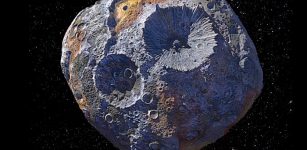 Unique Metal-Rich Psyche Asteroid – Its First Temperature Map Obtained From Earth
No Comments | Aug 6, 2021
Unique Metal-Rich Psyche Asteroid – Its First Temperature Map Obtained From Earth
No Comments | Aug 6, 2021 -
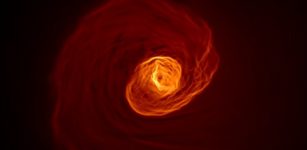 Giant X-Ray Tsunami Wave Twice The Size Of Our Galaxy Discovered In The Perseus Galaxy Cluster
No Comments | May 4, 2017
Giant X-Ray Tsunami Wave Twice The Size Of Our Galaxy Discovered In The Perseus Galaxy Cluster
No Comments | May 4, 2017 -
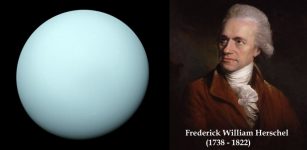 On This Day In History: Astronomer Sir William Herschel Announces Discovery Of Uranus – On Mar 13, 1781
No Comments | Mar 13, 2016
On This Day In History: Astronomer Sir William Herschel Announces Discovery Of Uranus – On Mar 13, 1781
No Comments | Mar 13, 2016 -
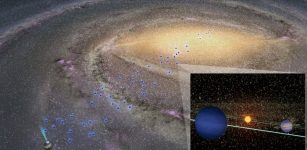 Cold Planets Exist Throughout The Galaxy And In The Galactic Bulge
No Comments | Aug 30, 2021
Cold Planets Exist Throughout The Galaxy And In The Galactic Bulge
No Comments | Aug 30, 2021 -
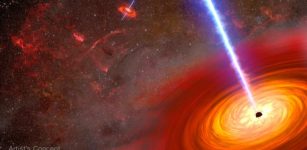 NASA’s Hubble, Chandra Find Supermassive Black Hole Duo
No Comments | Sep 11, 2024
NASA’s Hubble, Chandra Find Supermassive Black Hole Duo
No Comments | Sep 11, 2024 -
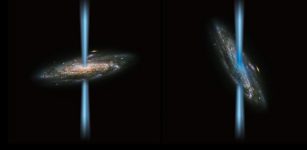 Black Hole or Newborn Stars? – Galactic Puzzle
No Comments | Dec 3, 2019
Black Hole or Newborn Stars? – Galactic Puzzle
No Comments | Dec 3, 2019 -
![The ultra-diffuse galaxy KKS2000]04 (NGC1052-DF2), towards the constellation of Cetus, considered previously a galaxy with no dark matter. Credit: Trujillo et al.](https://www.messagetoeagle.com/wp-content/uploads/2019/06/galaxynomatter001-307x150.jpg) Mystery Of The Galaxy With No Dark Matter Is Now Solved!
No Comments | Jun 9, 2019
Mystery Of The Galaxy With No Dark Matter Is Now Solved!
No Comments | Jun 9, 2019 -
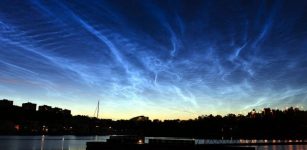 Dangerous Clouds At The Edge Of Space Are Spreading
No Comments | Feb 29, 2012
Dangerous Clouds At The Edge Of Space Are Spreading
No Comments | Feb 29, 2012 -
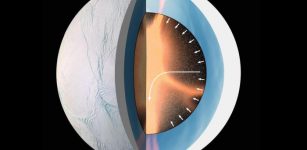 Organic Molecules Are Ejected From Cracks In Surface Of Saturn’s Moon Enceladus
No Comments | Jun 28, 2018
Organic Molecules Are Ejected From Cracks In Surface Of Saturn’s Moon Enceladus
No Comments | Jun 28, 2018

